There's no other car company in the world quite like Hyundai. With the might of an entire country behind it and 49 years in the car-building business, it really should have the world at its feet.
It's got its own steel plants, an education system built around supplying it the best and the brightest Korea has to offer and a growing infrastructure base that is the envy of the entire industry – including heavyweights like Toyota and Volkswagen.
Its Namyang proving ground, for example, is simply gargantuan, covering 3.3 million square metres of ground, with more than 7000 vehicles on-site at any one time. Hell, it can even crash-test up to five cars a day in its own state-of-the-art lab – and it does. Every single day.
It's only been in the last decade or so that Hyundai has really started to hit its straps, though. South Korea is a relatively young country, and it's long been one of the most insular in terms of its corporate culture – and that has played against it on a world stage.
To its credit, Hyundai recognised that the only way to match – and beat – its competition was to think like them. It began a recruitment drive to bring in some of the industry's big hitters to reshape the company, including men like Peter Schreyer (Audi), Thomas Burkle (BMW) and Albert Biermann (BMW M) who bring design and engineering skills and hard-won experience from some of the game's biggest players.
And in many ways, the third generation i30 – known as the PD – is the culmination of Hyundai's push towards becoming the number one seller of passenger cars in the world.
We've all seen the beautiful, scenic, romantic car ads with vistas of mountains in the background and a family of impossibly beautiful people doing incredible things.
The reality of car ownership is far from that. For a lot of people, a car is a functional device that gets them from A to B through life's ups and downs. Hyundai's i30 is one of the most popular cars in Australia, so replacing it was an important job for the company.
It's not replacing it for the enthusiasts. It's replacing it for everyday people. The new i30 isn't just a basic device, though. The company has managed to turn a stock hatchback into something more, for not a lot of money.
Hyundai I30 2017: Active
| Engine Type | Diesel Turbo 4, 1.6L |
|---|---|
| Fuel Type | Diesel |
| Fuel Efficiency | 4.5L/100km (combined) |
| Seating | 5 |
| Price From | $12,540 - $16,720 |
| Safety Rating |
|
A brief history of the i30
Launched in 2007, the i30 was the first car to really benefit from Hyundai's new-found wider world view.
Designed in Hyundai's then-new European Design Centre in Russelsheim, Germany, the first generation car – known as the FD – was developed by former BMW designer, Thomas Burkle, who would go on to design the next two as well.
Hyundai has sold an impressive 255,000 or so i30s to Aussies between the first two generations, and the car has become an important part of the company's mix locally.
It came in hatch and wagon form, and could be had with a multitude of engines. But the one that resonated with us most was the diesel – CarsGuide even awarded the i30 diesel its coveted Car of the Year prize in 2007.
The FD was superseded in 2012 by the more resolved GD, which also sported five-door hatch and wagon body styles.
Hyundai has sold an impressive 255,000 or so i30s to Aussies between the first two generations, and the car has become an important part of the company's mix locally – so much so that when time came to start designing the FD's replacement, around 2013, Hyundai Motor Company Australia earned itself a seat at the table when it came to designing a car that suited our unique conditions – and tastes.
Design philosophy
Let's be honest... we know Aussie buyers are currently infatuated with SUVs of all shapes, colours and sizes, and are moving away from sedans and hatches in a meaningful way.
Hyundai saw this coming, so the design philosophy pivoted around giving people something they didn't expect.
"Even though the previous car was successful, we didn't do a redesign," Hyundai's head of design Thomas Burkle told CarsGuide. "We opened a new chapter.
"And for us it was very important to give the car a 'premiumness', because the company decided to go for modern premium, and it wants to be measured against the best."
.jpg)
Key amongst the overall design cues for the small five-door hatchback is the elongated bonnet as well as a squared-up and thicker C-pillar (between the back door glass and hatch glass) to try and emphasise that more premium feel.
The large 'cascading' front grille is a new design feature for Hyundai, as well. It's something Mr Burkle says was inspired by the molten steel slabs that pass through Hyundai's huge steel plant every day; the fundamental building block for each and every Hyundai.
This is the first Hyundai to have this type of grille design, and it won't be the last.
Overall, the exterior design of the i30 is resolved and confident, and it looks good just sitting in the driveway - which, let's face it, is an important factor when you're buying a car.
The design isn't just about looks, either, with Hyundai chasing good fuel economy through clever aerodynamics.
'Simple is best' is one of Mr Burkle's mantras, and he and his team designed the car with a longer bonnet to give it a more mature look, and it's worked. It's a lovely looking thing that doesn't have to revert to flashy chrome accents to draw attention.
The design isn't just about looks, either, with Hyundai chasing good fuel economy through clever aerodynamics and a car that doesn't create undue noise.
Take the leading edge of the bonnet, for example; it's fitted flush and sealed with a rubber strip in order to keep wind noise and drag down. The ridges down the side of the car do the same job, as well.
On the lower part of the front bar, the outside ducts actually do what they say on the tin, drawing air in and through them and directing it along the face of the front wheel.
This lowers the pressure eddies and swirls in the lower part of the front bar cavity, which reduces drag and 'attaches' the air flow more neatly down the side of the car.
.jpg)
The front wiper arms are tucked down behind the trailing edge of the bonnet, too, and small plastic deflectors along the sides of the windscreen quieten wind noise and – you guessed it – help to reduce drag. Even the curve of the windscreen itself is designed to help the i30 cut through the air more easily.
Even the rear end hasn't escaped scrutiny. Two small air deflectors are hidden under the rear wing on the side of the car to calm the flow along the sides, while the rear wing smooths the exit of the air leaving the roof, reducing turbulence down and over the rear window.
Even though it's out of sight, the aero works extends underneath the car as well. Large, lightweight, flat plastic panels are attached to the car's underside at strategic points, which helps to smooth out turbulent airflow and again reduce drag through the air.
The sporty SR range gets LED tail-lights, while LED headlights are also fitted to the front of the premium-grade cars. The headlights include two low beam projectors, one high projector, and the DRLs have integrated indicators.
.jpg)
Wheel specs vary across the three cars, with the base Active getting 16x6.5-inch wheels and 205/55 R16 tyres, the Elite and Premium fitted with 17x7.0-inch rims and 225/45 R17 rubber, and the SR and SR Premium using 18x7.5-inch rims shod with 225/40 R18 tyres.
Dimensionally, the PD is 40mm longer than the GD at 4340mm, and 15mm wider at 1795mm. It drops 15mm in overall height to 1455mm, while its wheelbase is exactly the same at 2650mm.
Finally, the Premium-grade cars are fitted with a glass sliding sunroof that can't be deleted as an option. Fortunately, the glass is tinted and the cover is a block-out type to keep the interior of the car from heating up.
Colours for the i30 include 'Polar White', 'Platinum Silver', 'Sparkling Metal' (a bronzey silver), 'Iron Grey', 'Phantom Black', 'Demitasse Brown', 'Phoenix Orange', 'Fiery Red', 'Marina Blue' and 'Stargazing Blue'.
18-inch wheels on the SR
Getting 18-inch tyres on the SR should have been just a matter of ticking a box at Hyundai headquarters, right? Apparently not.
"I had very long arguments about fitting 18-inch alloy wheels to the SR with the head office," said Hyundai Motor Company Australia's assistant manager of product planning, Jonathan Lam.
"From the factory side it was a case of not wanting to stock all the different tyre combinations and wheel combinations. Other markets that take the 18-inch alloy wheels were predominately cold weather markets, and only spec all-season tyres with it.
"So they asked us, "Would you like to take the 18-inch wheels with all season tyres?" And we said, "No, thank you." Then the argument ensued. Luckily, we won."
Result? The tyre fitted to the SR is what's known in the industry as a 'summer' tyre, and Australia is the only market in the world to use the combination.
Design – interior
One thing that's immediately apparent about the i30 is that the base 2.0-litre car is just as nice inside as the more expensive versions. In particular, the things you touch and look at all the time are the elements that have received the most attention.
The instrument display, for example, could be straight out of an Audi A3. It's classically simple, beautifully clear, and has a genuine touch of beauty about it. It sounds strange, but it's gorgeous to look at. Even the small black and white screen in the centre of the dials is crystal clear with hints of shadow and shade that set it apart from competitors in the space.
Items like the tops of the doors are padded, and so are the door handles themselves where elbows will rest. The steering wheel in the base Active car is only polyurethane, not leather, but it still looks okay and feels fine under hand. The sweep of the horizontally-aligned dash is gorgeous and works perfectly well in the base car.
Hyundai's designers have managed to disguise the fact that a cheaper car needs to have a lot more plastic. Even the top of the dashboard is a soft feel material that looks nicer than a standard black, scratchy plastic.
.jpg)
One downside; there is a lot of surface area, which can throw off a bright glare in strong sunlight.
The Active, Elite and Premium have the same seat design, but the SRs have more side bolstering in the front seats, as well as red accented stitching, and red seat belts.
The second row gains 14mm of headroom, as well as 11mm of extra shoulder room over the old GD model.
A tablet style multimedia system is one of the headline features of the i30, and it's a very advanced system. Even the base model cars get satellite navigation as standard. The glove box is not lockable, but it is well-sized.
Every i30 also comes with automatic lights and automatic wipers, and electric door mirrors. In fact, it's quite astonishing what you get for so little money.
Practicality
One of Hyundai's key focuses with the new i30 was to make it a more useful and practical machine than the outgoing version. With words like 'simple' and 'modern' pinned to the designer's noticeboard, the PD i30 has hit that brief.
For the driver, there's a wide range of adjustment in seat height and distance from the wheel, as well as seatbelt height adjustment and wheel rake and reach.
The seats are firmly cushioned, and perhaps the base is a little bit short under the thigh for taller drivers. Hyundai says it has lost 10mm of headroom in the front, but my 185cm doesn't notice anything wrong, thanks mainly to a 15mm reduction in seat height at its lowest setting.
There's also an attention to detail that should be sounding a note of caution to rival carmakers. The i30's windows can be opened or closed from outside. Truly, it should be made mandatory in Aussie cars – letting out that first blast of heat on a summer's day as you head back to your car is a brilliant.
The rear door child locks, too, are double-action, requiring the use of the car's key to lock or unlock them, so kids are unable to play with them.
A rubber mat lines the bottom of the two cupholders up front, and it can be removed and washed easily. It's also rattle-free if items are left in there. The phone holder also features a rubber mat.
Under the rear floor, the spare wheel (full-size Active, Comfort, space-saver SR) sits in a polystyrene container, and in that container is a 10mm and 12mm spanner, a Phillips screwdriver, and a flathead screwdriver. The polystyrene container, too, is strong enough that can put it on the ground and kneel or sit on it to change the wheel.
If you jump on the brakes at over 60km/h in an emergency, your brake lights will flash to the car behind.
Bonus points, too, for the standard cargo net in all i30s, that attaches via four D-rings in the floor.
The new generation navigation system is a very neat bit of kit, too. Even if you don't program in a drive route, it will tell you when you're coming to a school zone, when your lane's merging on the left, where the speed cameras are, where the speed zones are different, and when you have your next service due.
Having the navigation display on the dash cluster is a Hyundai Australia first, as well, along with street-by-street direction calls.
"We've gone to the process of even checking the way the system speaks to you just to make sure it's correct for Australian grammar," laughs Jonathan Lam, Hyundai Motor Company Australia's assistant manager of product planning.
"One particularly proud moment is that the speed camera icon that appears on this navigation was actually something that I suggested at the time. So from now on every Hyundai product I hop in I keep telling my wife, "Oh, I designed that icon." And she goes, "Shut up. I heard this story too many times."
The system is contained within an 8.1-inch colour touchscreen that also houses functions like digital radio, Apple CarPlay and Android Auto functionality and a rear view camera with dynamic turn lines.

The wireless phone charger is also clever. Compatible with Android phones and the seventh generation iPhone (earlier models can be fitted with a charging case), the tray can also warn – via the dash – whether the phone has been left in the car.
The safety systems are advanced, too. Take the AEB system, for example. It works at speeds of up to 180km/h, and under 80km an hour it will bring you to a complete stop.
If there's no car in front, the adaptive cruise works from 30km/h upwards to 180km/h, and following a car you can start it from 10km/h. But if the car ahead comes to a stop it'll stop you, and if the car ahead starts moving off within three seconds, your car will automatically start, otherwise it would just prompt you to either flick the switch on the steering wheel to resume or hit the accelerator pedal.
If you jump on the brakes at over 60km/h in an emergency, your brake lights will flash to the car behind, and when you come to a stop your hazard lights flash until you move the car forward again.
Luggage-wise, the PD i30 has upped the boot capacity by 17 litres to 395 litres VDA (which is measured behind the second row of seats from the floor to the bottom of the window line). Hyundai has achieved this by reducing the thickness of the rear seat by 10mm and reconfiguring the boot floor arrangement.
It has lost some width over the GD (28mm between the rear wheel arches to 1053mm, to be precise) but it's picked up 21mm in total length (854mm) with the seats down and 62mm (579mm) with the seats up.
It's lost some height, as well; it's now 18mm lower at 549mm, measured from the floor to the top of the rear seat.
If you want to tow with your i30, you can; it'll take 1300kg of braked trailer across the range.
There's another issue that centres on the multi-level floor in the boot, and that revolves around the use of different rear suspension systems for the i30.
We'll talk about the suspension in a minute, but the gist of it is that the two sports models have a different rear end that requires the use of a shallower boot floor, and only come with a space saver spare wheel as a result. There's a fix, though.
"Because of the chassis floor designs, the SR and SR Premium cannot accommodate a full size spare at the lower boot height level," says Jonathan Lam. "So the alternative is that you can put the boot height at the higher level, so you lose a bit of space, but what it means is that when you load long luggage (or IKEA flat pack pieces like I did last week) you fold the seats down and it's completely flat.

"If you had a multi-link car and if you wanted to put a full size spare in it as an accessory, then the floor would sit at the completely flat level. So if you optioned yourself up to a full size spare, there's no real disadvantage."
In short, it comes down to marketing – Hyundai wanted to keep its message of increased boot volume consistent across the line, but you can still fit a full sized spare wheel and tyre in the SRs if you feel you need one.
If you want to tow with your i30, you can; it'll take 1300kg of braked trailer across the range, or 700kg if no trailer brakes are fitted.
Pricing
The PD i30 Active kicks off the range at $20,950 (all prices are before on road costs), which is a price drop of $500 over the outgoing GD Active.
It adds 16-inch alloys, LED daytime running lights, automatic headlights and a tyre pressure monitor system as standard over the old car, and Hyundai claims the extra equipment is worth another $2000.
Every i30 gets Hyundai's latest satellite navigation system as well as Apple CarPlay and Android Auto connectivity via an 8.0-inch colour multimedia screen. All grades get the same content in the multimedia system, as well.
The SR cars are petrol-powered and the Comfort machines are diesels.
The range has been parsed into two distinct lines; the Sports line includes the SR and SR Premium, while the Comfort range includes the Elite and Premium.
The SR cars are petrol-powered and the Comfort machines are diesels; it's not possible to interchange the two powertrains.
The Active sits across the bottom of the line, and can be had with with one of two engines and three transmissions. A new-for i30 2.0-litre direct-injection four-cylinder petrol engine can be matched to either a six-speed manual or six-speed automatic transmission.
An updated version of the company's trusty little 1.6-litre CRDi turbo diesel engine can be optioned with either a six-speed manual or seven-speed dual-clutch transmission. It will cost you $23,450 in diesel manual trim; add $2300 for an auto.

Standard kit on the Active includes a three-stage 'Drive Mode' switch for automatic transmission-equipped cars, seven airbags and keyless entry. It uses a MacPherson strut front/torsion beam rear suspension, while all other grades get a multi-link rear set-up (more on that later).
The first of the two Sports variants is the manual SR ($25,950), which scores Hyundai's 1.6-litre turbocharged four-cylinder engine that first saw local duty in the Elantra SR in 2016.
The SR also scores 18-inch rims, an inductive phone charger and an electronic handbrake on the dual-clutch version; the manual car gets a regular cable-operated handbrake instead. Oh, if you want the dual-clutch, it's an extra $3000.
It also gets Hyundai's 'SmartSense' driver aid system, which includes AEB, adaptive cruise control, blind spot detection, rear cross traffic alert and lane-keep assist as standard.
The 2.0-litre – which is not offered in its home market in the i30 – is still in the process of being done.
As an aside, the Active is the only car not to get the safety suite as standard, but Hyundai says that an optional kit should be available by the end of 2017.
The issue, according to Hyundai insiders, is the fact that even though the actual safety kit hardware is the same, the system needs to be individually calibrated for each powertrain type.
Hyundai worked on getting the 1.6-litre petrol and diesel engine calibrations done first, and the 2.0-litre – which is not offered in its home market in the i30 – is still in the process of being done.
The $33,950 SR Premium, meanwhile, gets front park assistance, those LED headlights, a sunroof, vented and heated front seats and one-touch auto windows over the SR. It's only available with a dual-clutch transmission, too, not the manual.
Looking at the Comfort line-up, the $28,950 Elite gets leather-accented trim (basically the bits you sit on are leather), the SmartSense safety package and an upgraded interior that includes a new dash with a colour central dash screen, a 'premium' centre console, electronic park brake and a phone charging pad.
It's only available with the 1.6-litre turbo-diesel and dual-clutch combo.
Above the Elite, the $33,950 Premium also gets front park assist, LED headlights, sunroof, vented and heated front seats and one-touch auto windows, as well as extendable sun visors. Not as silly as it sounds if you drive north/south in the morning/afternoon a lot!
It's the little things
Hyundai changed everything for the new i30, and we mean everything, including the rear view camera, which is now a tiny pinhole unit under the hatch handle, instead of a retracting type.
"It used to pop up in the 'lazy-H' logo on the tailgate before on the previous GD model," said Garry Jones, Hyundai Australia's national training manager. "They changed it because, to Hyundai's credit, there was feedback where people didn't like the sound of it closing down. It'd make a mechanical clunk noise. So that's why that's there.
"The other thing they've added is the blue lines on the reverse camera screen. I tell people that the blue lines are your rear wheels, and the yellow lines are your front wheels. So it tells you where your front wheels are going, and the blue lines tell you where your rear wheels are going. Simple."
Engineering basics
The Active scores a new-to-i30 2.0-litre directly injected, naturally aspirated four-cylinder petrol engine – known as the 'Theta-II GK4D' - which replaces the 1.8-litre petrol engine in the GD.
It makes 120kW/203Nm against an official combined fuel economy figure of 7.3L/100km in manual, and 7.4L/100km in auto. It picks up 13kW/28Nm over the old engine, and saves weight by using an alloy block and plastic manifold.
The company's UG VGT 1.6-litre turbo-diesel four has been upgraded for the new car. The Euro 5 tune diesel retains the same 100kW power output, with 280Nm of torque available with the manual and 300Nm with the dual-clutch box.
Hyundai claims 4.5L/100km for the manual diesel, and 4.7L/100km with the seven-speed dual clutch unit.
An electronically actuated turbocharger combines with a 2000BAR (29,000PSI) direct-injection fuel system, while rubber coated covers for the cylinder block sprockets and oil pan help reduce noise.

The SR, meanwhile, gets the same 150kW/265Nm 1.6 T-GDI turbocharged 1.6-litre engine that debuted locally in the Elantra SR late in 2016, which officially returns 7.5L/100km combined in both manual and dual-clutch guises. It adds 26kW/54Nm to the SR compared to the previous generation car.
The little turbo uses a variable vane turbocharger, along with what Hyundai calls an air dam intercooler feed, to minimise lag, while a high energy coil pack and more rigid mounts for the higher-capacity spark plugs help to stabilise the combustion process when things get really hot.
All Hyundai engines use the company's patented silent timing chain system rather than belts, and the last 10 years of i30 has resulted in an enviable reliability record.
On the packaging front, all of the car's ABS modules are mounted against the firewall, where other cars have these vital parts mounted in the right-hand front mudguard. A fairly minor bingle could then turn into an expensive repair - or possibly a more dangerous situation in the event of a crash.
All the i30's plastic engine shrouds are easy to remove, and are rounded to make life easy for mechanics.
When it comes to gearboxes, there are three across the i30's range; a traditional six-speed automatic that mates only with the 2.0-litre petrol engine in the Active, a six-speed manual that serves the Active and the SRs, and Hyundai's own '7-DCT' dual clutch auto.
The dual-clutch isn't offered on the SRs, and that's a deliberate ploy on the part of Hyundai.
"Even understanding that within the small segment, manual take-up rate is declining pretty fast, but I think it's important to offer the customers choice," says Jonathan Lam.
"There will be a customer out there that wants a manual sporty small car, especially at this sort of price point. With i30 we do enough volume off the car, so despite being only maybe a small percentage, at least we can still justify it internally."

The gearboxes themselves are sealed units; there's no dipstick to be seen. The oil can be changed if the car is covering commercial mileages, but even then when it's only at higher odometer readings.
"The only thing you need to do is put water in the washer bottle, and if you want to check the oil dipstick, you can," says Jonathan. "Everything else is sealed."
Servicing intervals are at 15,000km for the non-turbo 2.0-litre, while the service interval for turbos has pushed out from 7500km to 10,000km.
In terms of fuelling, all of Hyundai's petrol engines run quite well on E10 (which is 94 RON), as well as 91RON, even in the turbo engines.
Front clip repairs are easy too, thanks to a completely removable front section that allows easy access to the front of the engine.
Oh, and if you leave the car at the airport to go on holiday, the car stops looking for the proximity key after about a week, and it puts the battery to sleep. When you come back from holiday, you can still get home.
Engineering basics
Hyundai Australia makes a big deal of the fact it takes the cars it gets from its head office and tunes them to suit local conditions. It's neither a cheap nor rapid process.
There are thousands of permutations of suspension tuning to look at and adjust, and then there's the possibility of 'lost in translation' misunderstandings between the head office in Seoul, the manufacturing plant in the Czech Republic, and Australia.
But Hyundai Oz has been at this for more than a decade, and it is really starting to pay dividends, with the Korean engineers taking note of what the Aussies do and say, and putting that into the cars even before they get here.
The work of the local tuners isn't to turn the i30 into a race car, but it has to cope with the myriad of conditions you'll find in a typical Aussie environment. Everything from smooth gravel roads, to rough tarmac, to cityscapes with sharp bumps, and lots in between.
With the wave of a magic wand, the team has turned this small hatchback into something it really shouldn't be.
And they didn't leave a single stone unturned. Under the guidance of world-renowned suspension guru David Potter, the local team built up 416 different shocks and used 20 different spring sets and swaybar changes for three different layouts – petrol 2.0, diesel and SR – and ran a total of 168 separate tests to give each its own character.
The result is frankly astonishing. The i30 in its original Korean suspension tune was already pretty good, but with the wave of a magic wand, the team has turned this small hatchback into something it really shouldn't be. It feels confident and it rides beautifully.
The only downside is road noise from the tyres on rougher surfaces, but it's no worse than anything else in the category.
The team also went into a lot of finer details, like the steering control logic. The motor that drives the electric power steering is now a higher output unit, allowing finer tuning of the assistance.
Even the brake booster has been tweaked to improve feel, and there's a return spring in the brake caliper that holds the pad off the disc. It also pressurises the brake fluid back in the line to give you a nicer, firmer pedal feel.
The SR model received even more special treatment, and shows just how much input the local team had.

"The team were tuning the ride and handling and they basically they got to a point where they thought, 'Alright, this car is really good and we can drive it with stability control off really well'", says Jonathan Lam, "but they found the stability control had a tendency to intervene just a little too early when being pushed to, say, nine-tenths.
"So they lobbied head office and got permission to re-tune the stability control, and they relaxed the limits just a little bit.
"So it's still safe, but it means you can now enjoy this car with the stability control on. It's a first for Hyundai Australia."
The Actives, Elites and Premium fundamentally share the same comfort-based suspension tune, and all three use a combination of MacPherson strut front and a torsion beam rear layout, which differs from the SR's multi-link (or independent) rear end.
Why not use the same rear suspension across all models? Differentiation for the SR was considered an important target, for one, and the company was prepared to trade the slight compromise in space for something that was a measure better than its stablemates.
Hyundai steel is genuinely a special material. The raw materials – iron ore, coked coal and limestone – are handled and stored in such a way that impurities and moisture contamination is kept as low as possible.
Interestingly, Australia's diesels are the only torsion beam examples in the Hyundai world – but that said, there's no compromise in choosing the Comfort cars over the SR. They are tuned to do different jobs, and both do them exceptionally well.
None of the suspension work would be of any benefit if the chassis isn't up to the task – and this is where the steelmaking element comes into it.
Hyundai steel is genuinely a special material. The raw materials – iron ore, coked coal and limestone – are handled and stored in such a way that impurities and moisture contamination is kept as low as possible. The materials are even held in large domed storage sheds and conveyed underground to keep them out of the elements.
A tonne of iron ore – with the majority coming from Australian mines – goes into a single car.
The resultant steel is incredibly strong, and a particular blend known as advanced high strength steel forms the basis for a strong and stiff chassis. More than 53 per cent of the body of the i30 is made from it, which is up from 27 per cent used in the previous car. It also uses 112m of body structural adhesives in its mix, up from just 20m in the GD.
The result is a chassis that is 37 per cent more rigid and 28kg lighter than the GD, according to Hyundai.
N is coming
There's another i30 model to come, and it's quite a bit hotter than the SR. Chief designer Thomas Burkle told CarsGuide that even before he started to design the i30, the N was already on his mind.
"We were thinking conceptually, before we sketched some shapes, that we have to think about the dimensions of the current car," he said. "If they are not right, what do we change? What is the wheelbase, what is the width for the car? What variants we will have?
"For example, we have the N. If you make the (base) car too narrow and then you make an N, you cannot put on the proper tyres, so you need to think a lot before you start. The thought process is as important as later the execution of the design."
Fuel economy
Over 560km aboard a manual Active, we used 46 litres of fuel from the 50-litre tank, for a real-world combined fuel economy figure of 8.2L/100km. This is compared to an official combined figure of 7.3L/100km.
Curb weights vary between 1357kg for the manual Active, through to 1445kg for the dual-clutch Premium diesel. Out of interest, the manual SR is 1407kg.
Verdict
While all the hype and hoopla is focused on SUVs, the fact is that the small hatchback still outsells all crossovers on the market.
As one of Australia's best selling cars of the last couple of years, the i30 has the job ahead of it to keep up the good work. With Hyundai's obvious focus on making a good thing even better, there's little doubt the i30 will figure on people's shopping lists for some time to come.
Pricing Guides
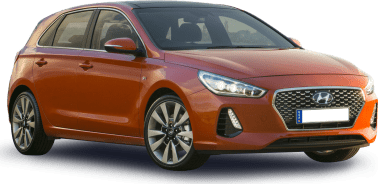
Range and Specs
| Vehicle | Specs | Price* |
|---|---|---|
| Active | 1.6L, Diesel, 6 SPEED MANUAL | $12,540 - $16,720 |
| Active 1.6 Crdi | 1.6L, Diesel, 6 SPEED MANUAL | $12,210 - $16,280 |
| Active X | 1.6L, Diesel, 6 SPEED MANUAL | $13,750 - $18,040 |



.jpg)


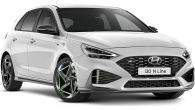










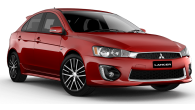

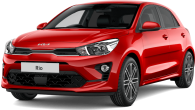


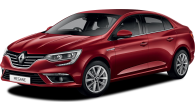
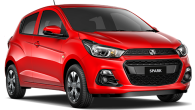
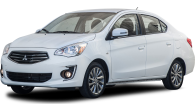






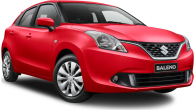





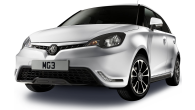


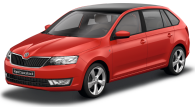

.jpg)

